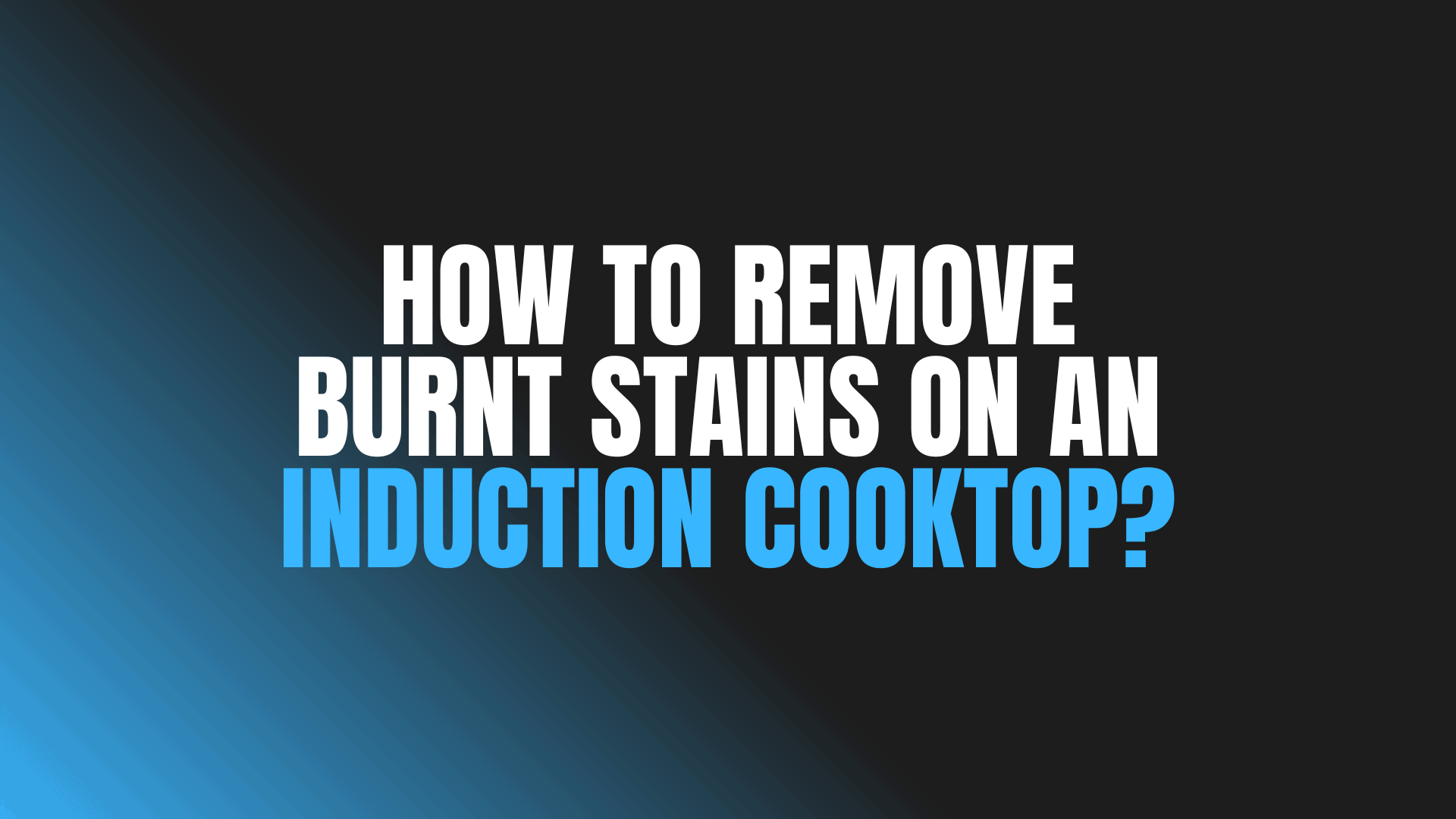
Question: How To Remove Burnt Stains on an Induction Cooktop?
Answer: To remove burnt stains on an induction cooktop use a specialized induction cooktop cleaner or a paste of baking soda and water. Gently scrub with a non-abrasive pad, then wipe clean.
Restore Your Induction Cooktop’s Shine: Removing Burnt Stains
Induction cooktops offer sleek design and efficient cooking. However, spills and splatters happen, sometimes resulting in stubborn burnt stains. This can detract from your kitchen’s appearance and potentially affect the cooktop’s performance. Don’t worry, removing these burnt stains is often easier than you think. This guide provides simple, effective methods to restore your induction cooktop to its original pristine condition. We’ll cover various techniques, from gentle cleaning solutions for light burns to more intensive approaches for heavily encrusted residues. Learn how to tackle different types of burnt stains, understand the tools needed, and discover preventative measures. Follow these steps, and you’ll have a sparkling clean cooktop in no time.
Whether you’re dealing with a minor scorch mark or a more significant burnt-on mess, this guide offers practical solutions. You’ll learn how to identify the type of stain and choose the most appropriate cleaning method. We’ll also emphasize the importance of regular maintenance to prevent future burnt stains and preserve your cooktop’s longevity.
Understanding the Stain
Before you begin cleaning, assess the burnt stain. Is it a light discolouration or a thick, caked-on mess? Knowing the stain type helps you choose the right cleaning approach. A light scorch mark may only require a mild cleaning solution, while a heavier stain might need a more intensive treatment. Understanding the nature of the stain prevents unnecessary scrubbing and potential damage to the cooktop surface. This initial assessment saves you time and effort in the long run.
Different types of food also leave different kinds of residue. Sugary spills, for example, tend to caramelize and adhere firmly to the cooktop. Oils and fats can create a greasy, burnt film. Identifying the source of the stain can also inform your cleaning strategy.
Please follow this link to read more about Blue Kitchen Refacing
Related Article: What Happens if You Forgot To Turn Off an Induction Stove?
Related Article: Do You Need Special Pans for an Induction Oven?
Tackling Tougher Stains
Heavier, more stubborn burnt stains require a stronger approach. A specialized induction cooktop cleaner is a good option. Follow the product instructions carefully. Another effective method involves using a scraper designed specifically for ceramic or glass cooktops. Hold the scraper at a low angle and gently push it across the burnt area to lift the residue. Avoid applying excessive pressure, which can scratch the surface. Combine scraping with a cleaning solution for optimal results.
After scraping, clean the area with a soft cloth and warm soapy water. Rinse thoroughly. For particularly stubborn stains, you may need to repeat the process a few times. Patience is key when dealing with tough burnt-on food.
Preventing Future Burnt Stains
Prevention is the best way to maintain a pristine induction cooktop. Wipe up spills immediately, especially sugary or starchy substances. Use cookware with flat bottoms to ensure even heat distribution and minimize spills. Avoid sliding pots and pans across the cooktop surface, as this can cause scratches and trap food particles. Regular cleaning with a mild soap and water solution keeps the cooktop free from debris that could potentially burn onto the surface.
Investing in silicone mats or heat-resistant liners can also protect the cooktop from spills and scratches. These liners create a barrier between the cookware and the cooktop, making cleaning much easier. Consider placing a paper towel under pots with a tendency to boil over. This simple trick can save you from a major cleaning job.
Maintaining Your Cooktop
Regular maintenance keeps your induction cooktop in top condition. Clean the cooktop after each use with a soft cloth and mild soap. Dry the surface thoroughly to prevent water spots. For weekly cleaning, use a specialized induction cooktop cleaner to remove any lingering residue and maintain shine. Inspect the cooktop regularly for any scratches or damage. Addressing minor issues promptly prevents them from becoming bigger problems down the road.
Proper care extends the lifespan of your induction cooktop and ensures optimal performance. A well-maintained cooktop not only looks great but also heats efficiently, saving you energy and time in the kitchen.
Conclusion
Keeping your induction cooktop free from burnt stains is achievable with the right techniques and regular maintenance. By understanding the nature of the stain and applying the appropriate cleaning methods, you can restore your cooktop’s shine. Remember, gentle cleaning solutions often suffice for light burns, while tougher stains may require specialized cleaners or scrapers. Always prioritize gentle cleaning practices to avoid damaging the cooktop’s delicate surface.
Prevention is always the best approach. Wipe up spills promptly, use appropriate cookware, and establish a regular cleaning routine. By following these simple steps, you can maintain a spotless cooktop and enjoy its sleek appearance and efficient performance for years to come. A clean cooktop contributes to a more enjoyable cooking experience and enhances the overall aesthetic of your kitchen.

Blue Malue Get in touch with Blue here.
